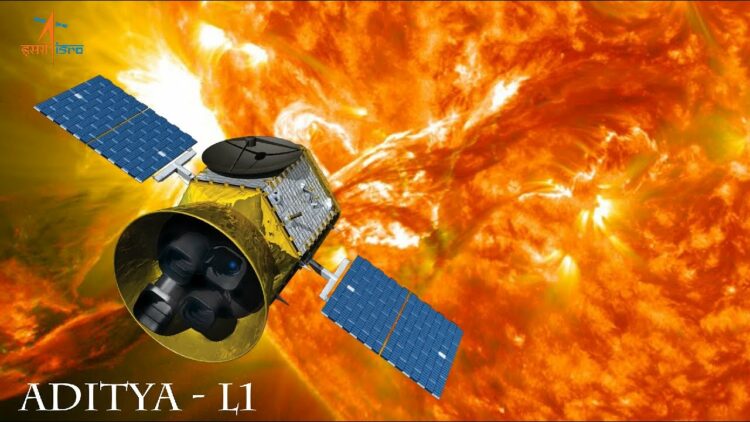Two days after Chandrayaan-3 created history after the successful landing on the south pole of the moon, the Indian Space Agency (ISRO) has revealed the next path-breaking mission to launch the Aditya-L-1 Mission solar observatory into space.
The director of the Space Applications Center-ISRO, Nilesh M Desai, said that the Aditya L-1 Mission is ready and waiting. The solar mission will be launched by ISRO from the Satish Dhawan Space Centre (SDSC) at Sriharikota on September 2, 2023.
About the Mission
Aditya L-1 spacecraft is India’s first space-based solar observatory venture. It is equipped with the coronagraphic satellite and this remarkable mission and will be launched by the first week of September 2023, according to ISRO. The sun monitoring space probe is equipped with the Visible Emission Line Coronagraphy (VELC), which will enable the spacecraft in imaging and spectroscopy and understand the science powering the sun.
Apart from the VELC, the spacecraft is equipped with six other instruments for conducting various observations on the sun’s surface. As per the website of ISRO, “Using the special vantage point L-1, four payloads directly view the sun and the remaining three payloads carry out the in-situ studies of the particles at Lagrange Point L1, thus providing important scientific studies of the propagation effect of the solar dynamics in the interplanetary medium.”
The website states that the suits of the payloads will enable and provide crucial information to understand and comprehend the problem of corona heating, mass ejection, pre-flare and flare activities and their characteristics, dynamics of space weather, propagation of particles and fields, etc.
The Mission holds great promise in solar science, offering scientists valuable insights into things like solar flares, magnetic fields and the outermost layer of the Sun.
The L-1 point of the Earth-Sun System will give the probe an uninterrupted view of the Sun, and it is home to the Solar and Heliospheric Observatory Satellite (SOHO) from NASA. The position will give the advantage of observing solar activities continuously. As per NASA, the Lagrange Point is a position in space where the gravitational forces of a two-bodied system, such as the Earth and Sun, produce enhanced regions of attraction and repulsion.
Aim and Objectives
According to the Indian Space Agency, the Aditya-L-1 Mission includes an understanding of the chromosphere and the coronal heating, the physics of the partially joined plasma, and the formation of coronal mass ejections and flares. The mission will calculate the temperature, velocity and density of the outermost layer and various other layers of the Sun. It will gather information about the solar wind and weather of the space. The other goal of the Aditya L-1 is to understand the impact of the Sun on Earth’s climate
It will be placed in a highly elliptical orbit around the Lagrange Point one of the Sun-Earth System, where it will conduct close observations of the Sun while monitoring solar activity. The probe will attempt to enhance our understanding of the star that sustains life on Earth.
Importance
The Sun, which sustains life on Earth, is a 4.5-billion-year star which is located 150 million kilometres away from the Earth; the sun’s gravity holds the solar system together. The Sun’s activity, from its powerful eruptions to the steady system of charged particles it sends out, influences the nature of space from the solar system.
The activity on the Sun’s surface creates a type of weather called space weather, which can impact the Earth and the rest of the solar system. Ultraviolet rays from the Sun affect and are impacted by the global climate change.
Changes in the UV Radiation can influence cloud formations, water vapour and temperature patterns in the lower atmosphere of the Earth. Additionally, Solar flares are very fatal for astronauts, spacecraft and radio communications.




















Comments